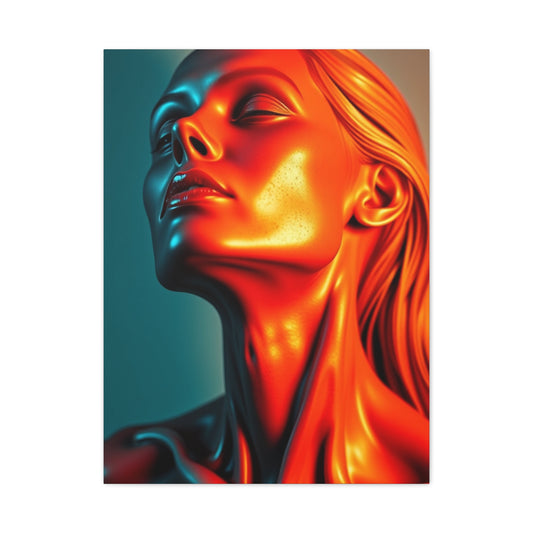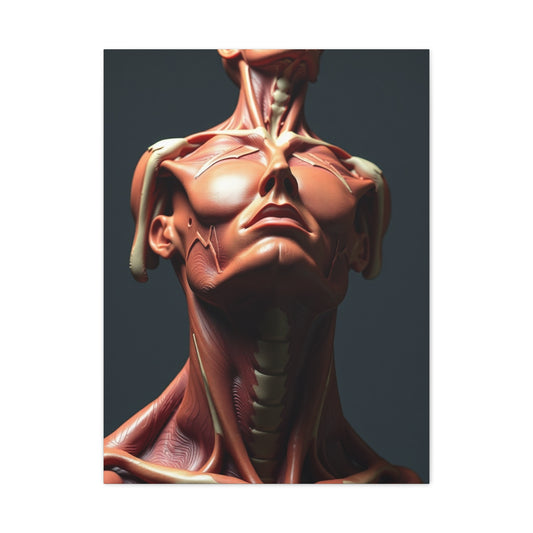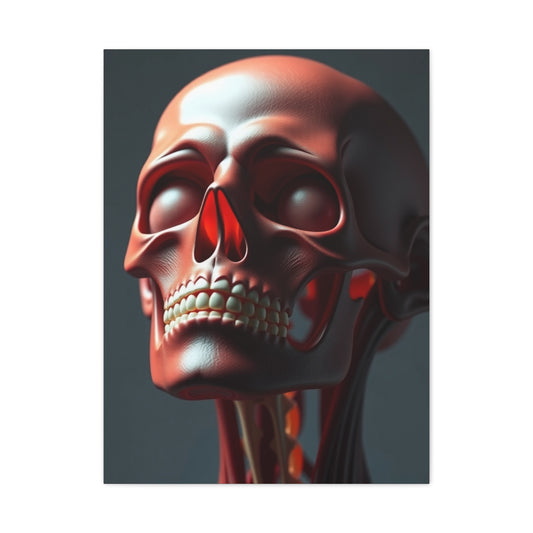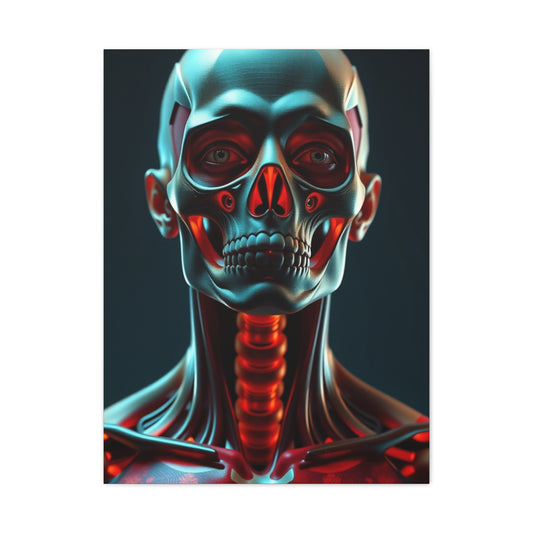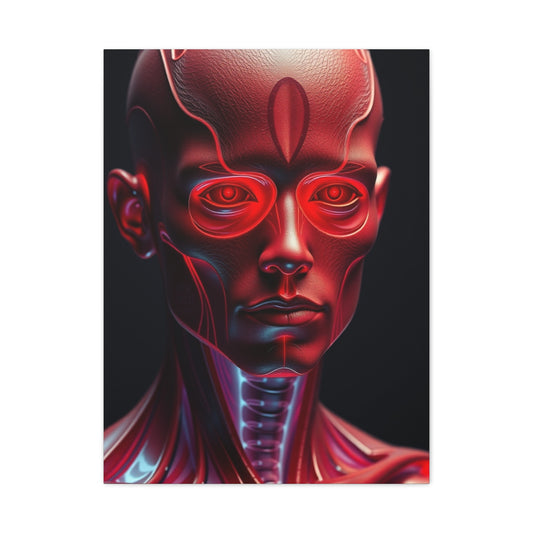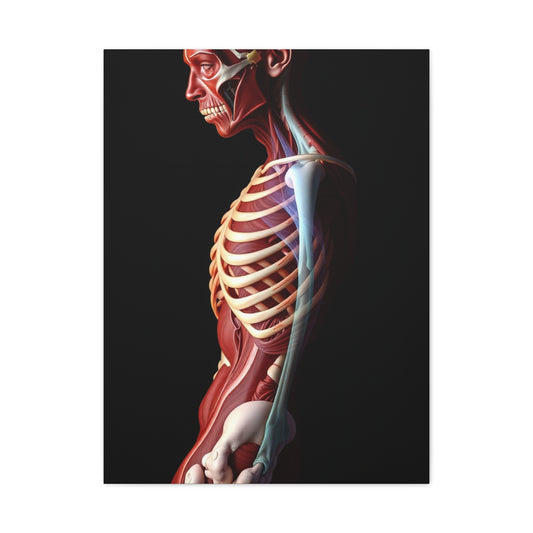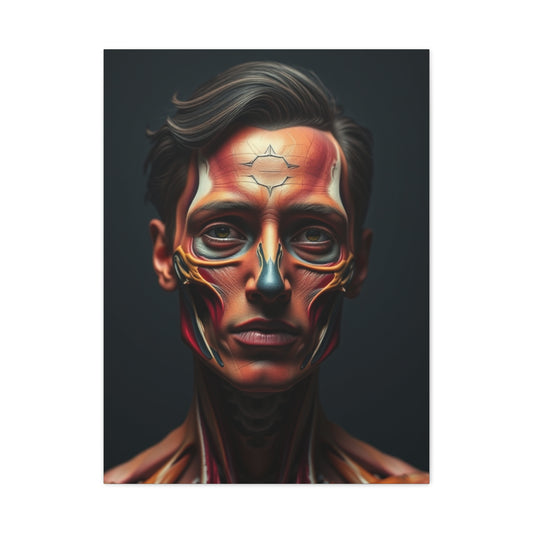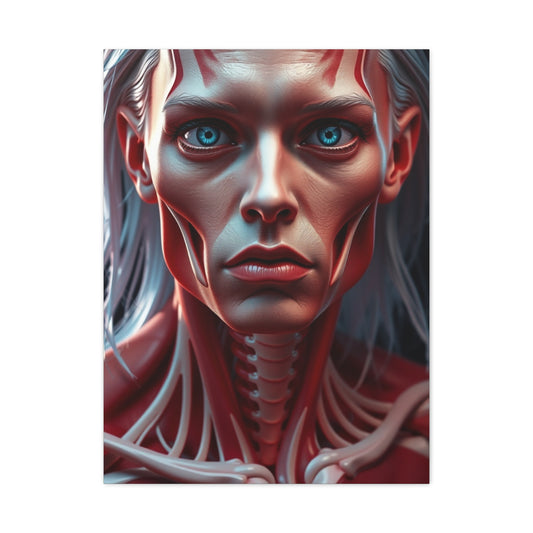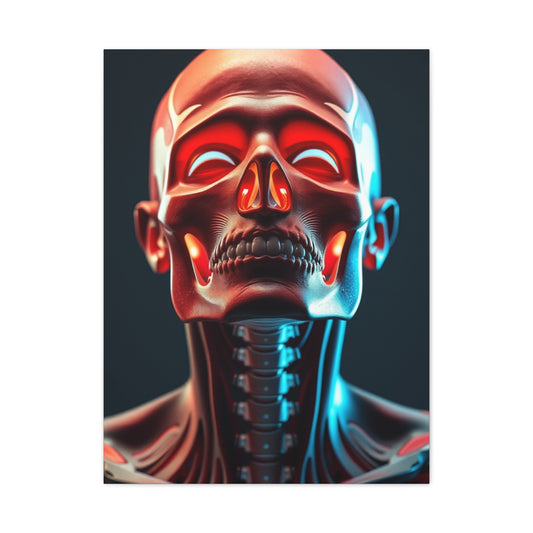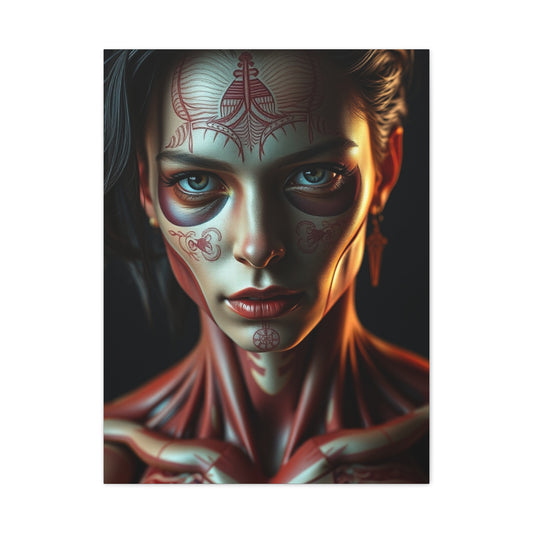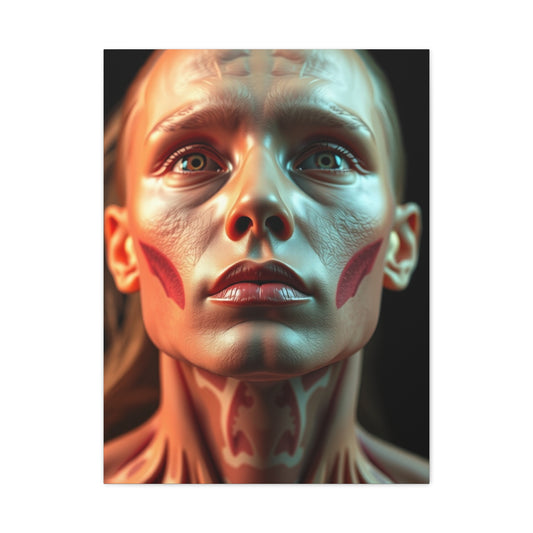The Art of Anatomy: Creative Wall Art for Your Space
The genesis of creating magnificent stone wall paintings emerges from a profound appreciation for the enduring beauty and architectural significance of these ancient structures. The anatomy of a stone wall painting requires meticulous planning, technical expertise, and an intimate understanding of how weathered stones interact with natural lighting conditions. This comprehensive exploration delves into the intricate process of transforming panoramic photographic references into compelling watercolor masterpieces that capture the essence of rustic countryside charm.
Stone walls represent more than mere boundary markers; they embody centuries of craftsmanship, geographical heritage, and the harmonious relationship between human ingenuity and natural materials. When approaching the anatomy of a stone wall painting, artists must recognize these structures as complex compositions featuring varied textures, subtle color variations, and intricate shadow patterns that shift throughout different times of day. The elongated format particularly suits stone wall subjects, allowing for comprehensive documentation of these linear architectural elements while emphasizing their continuous, meandering character across landscapes.
The selection of appropriate watercolor paper becomes crucial when considering the anatomy of a stone wall painting project. Long, narrow strips of high-quality watercolor paper provide the ideal canvas for capturing the horizontal expanse of stone walls while accommodating the detailed rendering required for individual stone characterization. This format choice directly influences compositional decisions, forcing artists to think panoramically rather than focusing on isolated segments, thereby creating more authentic representations that honor the true nature of these architectural features.
Preliminary photographic documentation serves as the foundational reference material for successful stone wall paintings. Multiple panoramic captures from various angles and lighting conditions provide comprehensive visual information necessary for informed artistic interpretations. These reference photographs should emphasize textural details, mortar patterns, vegetation integration, and the subtle color variations that distinguish individual stones within the overall composition.
The Essential Role of Preparatory Sketching in Stone Wall Painting
In the intricate world of stone wall painting, the preparatory phase is where the foundation for an outstanding piece of art is laid. The first step, sketching, acts as the structural blueprint, carefully outlining the stone arrangement and setting the tone for the overall composition. This early phase demands a high level of precision, as the sketch forms the backbone of the entire painting process, especially when working with delicate mediums like watercolor. It ensures that the artist can proceed confidently, knowing that the essential elements of the artwork—stone placement, proportions, and interlocking patterns—are in place.
The importance of preparatory sketching cannot be overstated. It’s not just about creating an outline to follow; it involves understanding the geometry of stone walls, the way individual stones fit together, and how they create harmony within the composition. By observing and recording these structural nuances, the artist can more effectively communicate the authenticity of the stonework, which is vital for achieving a truly realistic representation.
Importance of Non-Water Soluble Ink for Structural Integrity
One of the fundamental techniques for ensuring the success of a stone wall painting is the use of non-water soluble ink during the sketching phase. This choice of medium offers several advantages. Non-water soluble ink serves as a permanent foundation that holds up under the rigorous demands of watercolor painting. As watercolor can be applied in wet-on-wet techniques, the ink’s resistance to water ensures that the essential lines and structural elements of the sketch remain intact, even as the painting process becomes more fluid and experimental.
Using this type of ink provides a sense of security for artists. As they introduce watercolors, sometimes in bold and unexpected ways, they can rely on the stability of the initial sketch. Unlike pencil, which can easily smudge or fade when exposed to water, non-water soluble ink maintains the artist’s carefully planned framework. It offers the artist the freedom to explore different watercolor effects—such as blending, layering, and the creation of dramatic contrasts—without worrying about losing the integrity of the foundational structure.
Furthermore, the permanence of non-water soluble ink helps establish the overall rhythm and flow of the stone wall painting. By carefully considering the stone proportions, joint patterns, and the overall architecture, the artist ensures that the sketch serves as a reliable guide for each subsequent phase of the painting.
Crafting a Thoughtful Organizational Framework for Stone Walls
In stone wall painting, the sketch doesn’t simply serve as an outline but as a carefully constructed organizational framework. It’s essential to understand how the stones interact with one another, how they interlock, and how their placement affects the overall composition. Each stone must be placed with thoughtfulness, ensuring that no individual stone dominates the scene while still contributing to the overall structural integrity.
The placement of the stones should also mimic the irregularity found in traditional dry stone walls. In nature, no two stones are perfectly shaped or placed in a symmetrical pattern. The art lies in the balance between randomness and organization. Through careful sketching, the artist creates a visual rhythm that mirrors this natural irregularity while preventing the work from becoming too chaotic or monotonous. The goal is to achieve a realistic balance where the stones feel as though they could physically support one another.
Strategic ink placement within the sketch helps to define areas of focus and guides the artist’s hand as they progress with the watercolor application. For instance, marking out certain areas with thicker, darker lines can create depth, while leaving other stones lighter helps to create a sense of airiness or perspective. This organizational approach ensures that when watercolor is applied, it complements the structure of the stonework rather than overwhelming it.
The Artistic Value of Stone Interlocking and Structural Systems
For artists to truly capture the essence of a stone wall in their painting, they must not only understand how to render stones individually but also how the stones interlock to create a unified structure. The interlocking of stones is a fundamental principle in traditional dry stone wall construction, and it’s one that artists must observe closely when sketching. The way each stone supports the other is essential to the wall’s stability and, by extension, the authenticity of the artwork.
Incorporating an understanding of architectural principles into the sketching phase helps bring a sense of realism to the painting. The stones must be placed in a way that reflects both the physical and visual weight distribution that occurs in real-life stone walls. This adds a layer of depth to the painting, as the viewer is not simply looking at individual stones, but at a system of elements that are working together in harmony.
An artist’s analysis of stone interlocking also influences the emotional tone of the painting. For example, the strategic placement of certain stones may suggest strength and durability, while others may feel more fragile or weathered. These subtle choices provide a narrative that supports the overall story the artist wishes to tell. Whether it’s a depiction of a strong, sturdy wall built to last or a weathered structure showing signs of age and decay, the way the stones interact with one another is integral to creating a believable and captivating piece.
Leveraging Creative Freedom with Permanent Ink Foundations
One of the greatest advantages of using non-water soluble ink in the sketching process is the creative freedom it affords the artist. Once the permanent framework is in place, the artist is free to experiment with watercolor techniques, knowing that the essential structure won’t be compromised. The flexibility of watercolor painting—especially in techniques like wet-on-wet—allows the artist to blend colors, create soft gradients, and develop contrast without worrying about losing the delicate outline of the stones.
With the foundation securely in place, the artist can push the boundaries of traditional stone wall painting. By using bold color mixing or incorporating dramatic contrasts, they can enhance the visual impact of the stone wall while still adhering to the fundamental principles established in the sketch. Non-water soluble ink acts as a safeguard, allowing the artist to work confidently and creatively without the risk of altering the integrity of the original design.
This creative flexibility also enables the exploration of different moods and atmospheres. For instance, through experimental color techniques, the artist can give the stone wall a sense of warmth, coldness, or even mystery, depending on the intended theme. By combining technical precision with artistic expression, the sketch and ink foundation allow for a wide range of possibilities.
Ensuring Artistic Precision and Consistency Throughout the Process
The beauty of a well-executed stone wall painting lies in its precision and consistency. The preparatory sketch is crucial for ensuring that every stone is placed in relation to its neighbor with both accuracy and artistic intent. A stone wall, after all, is not merely a collection of random shapes and colors—it is a cohesive structure that tells a story through its materials and craftsmanship.
Using non-water soluble ink to create a structural foundation ensures that the entire painting process remains grounded in the principles of stone construction. The artist’s understanding of how stones fit together, support each other, and create a stable structure informs every stroke of the brush, resulting in a final product that feels both real and intentional.
Furthermore, the consistency of the sketching phase allows for a smoother transition into the painting process. As the artist layers colors and refines details, they can refer back to the foundational sketch to ensure that the placement of each stone remains true to the vision. This consistency is especially important when working with watercolor, a medium that often requires multiple layers and adjustments. The sketch acts as a map, guiding the artist toward their final destination.
The Interplay Between Structure and Expression in Stone Wall Art
Ultimately, the relationship between structure and expression in stone wall painting lies at the heart of the entire creative process. While the structural sketch and the use of permanent ink provide the technical foundation, it’s the subsequent watercolor techniques that allow the artist to bring emotion, depth, and complexity to the piece. Stone wall painting is a balance between these two forces—where technical precision meets creative exploration.
The preparatory sketch is crucial in maintaining the artwork’s structural integrity, but it’s the watercolor painting phase where the true artistry shines. The ability to blend colors, manipulate textures, and create light and shadow effects elevates the work beyond a mere representation of a stone wall. It transforms the piece into a dynamic expression of the artist’s vision and understanding of the medium.
As artists continue to refine their skills, the interplay between structure and expression becomes more intuitive. With each completed painting, the artist’s ability to balance these elements becomes more seamless, allowing them to push the boundaries of traditional stone wall painting while still honoring the underlying principles that make the artwork convincing and authentic.
Mastering Watercolor Layering Techniques for Stone Wall Art
Creating a compelling stone wall painting requires more than just technical skill; it involves a deep understanding of how various elements, such as texture, depth, and color, interact to create a convincing representation of a dry stone wall. One of the most effective methods for achieving this level of realism is through advanced watercolor layering techniques. These techniques allow artists to build up subtle tonal variations and a complex texture, giving the illusion of depth and weight that characterizes natural stone walls.
Watercolor is a unique medium that offers both transparency and fluidity, making it ideal for creating atmospheric effects. When applied with precision and attention to detail, watercolors can bring a sense of life to the stone surfaces, mimicking the way light and shadow interact with natural stone formations. By employing strategic layering methodologies, artists can achieve an exceptional level of detail and visual interest, enhancing both the texture of the stones and the overall composition of the painting.
The Role of Water-Soluble Inks in Building Depth and Complexity
Water-soluble inks serve as the cornerstone for sophisticated watercolor layering. These inks provide artists with the ability to introduce nuanced tonal variations without compromising the essential transparency that defines watercolor painting. When used correctly, water-soluble inks offer an almost limitless palette of colors and effects. The challenge, however, lies in understanding how the inks will interact with one another during the layering process, and how different pigments can be blended to achieve the desired color harmony.
By strategically applying these inks in various layers, artists can control the intensity and temperature of the colors, which is crucial when representing the subtle shifts in color that natural stones exhibit. For example, the slight differences in tone between the various stones in a dry stone wall may range from light grays to rich browns, with each stone presenting a unique blend of colors due to exposure to the elements. By using water-soluble inks in combination with controlled layering techniques, these tonal variations can be created with remarkable accuracy, adding to the overall depth and realism of the painting.
Capturing the Diversity of Stones through Layered Watercolor Effects
One of the most essential aspects of painting a stone wall is capturing the inherent diversity found in each stone. Unlike uniform surfaces, natural stone walls are made up of stones with varied sizes, shapes, textures, and colors. In order to replicate this variety, artists must approach each stone with individual attention, ensuring that no two stones look identical within the painting. This is where watercolor layering comes into play.
Through careful application of layers, artists can mimic the irregular surface textures of each stone, highlighting its unique characteristics. For example, some stones may have rough edges and deep crevices, while others may be smooth and rounded. These differences can be enhanced by using varied application methods, such as dry brushing, wet-on-wet, and glazes. Each method can achieve a different effect, contributing to the overall diversity of the wall. By using multiple layers, the artist can build up complexity, gradually adding subtle shadows, highlights, and textures that make the stones come alive.
Moreover, layering allows artists to create variations in the color of each stone, further enhancing their individual characteristics. For instance, stones exposed to more sunlight might appear lighter or more faded, while those in shadow may have richer, deeper hues. Through careful layering, these color shifts can be captured, resulting in a painting that feels dynamic and realistic.
Alternating Between Wet and Dry Application Methods for Atmospheric Effects
One of the defining features of advanced watercolor painting is the ability to control the flow and spread of color. By alternating between wet and dry application methods, artists can manipulate the watercolor’s inherent fluidity to create a variety of effects. This technique is especially useful when depicting the atmosphere surrounding a stone wall, as it allows artists to capture both soft, diffused lighting and sharp, defined structural lines.
The wet-on-wet technique, for example, involves applying wet paint to a wet surface, allowing the colors to blend and flow into one another. This is ideal for creating atmospheric effects like mist, haze, or the soft glow of light hitting the surface of the wall. Wet-on-dry, on the other hand, involves applying wet paint to a dry surface, which results in crisper, more defined edges. This method is particularly useful when painting the sharp edges and contours of the stones, ensuring that the structural definition of the wall is preserved while still allowing for the softer elements of the composition.
By alternating between these two methods, artists can achieve a balanced composition, where both the overall structure and the finer details are equally emphasized. The result is a painting that functions on multiple levels, offering both a broad, atmospheric view of the wall and the intricate details of individual stones when observed closely.
Gradually Building Contrast and Depth for Three-Dimensionality
One of the most significant challenges in painting a stone wall is conveying the sense of depth and three-dimensionality. In reality, stone walls are not flat surfaces; they have varying depths, contours, and textures that interact with light and shadow. To replicate this complexity, artists rely on the gradual buildup of contrast through successive layers of watercolor.
By applying layers of color in a strategic manner, artists can enhance the shadows and highlights on each stone, giving the wall a more three-dimensional appearance. The key to achieving this effect is to build up the layers gradually, starting with lighter tones and progressing to darker, more intense hues. This allows for smooth transitions between light and dark areas, preventing harsh lines or transitions that could detract from the realism of the painting.
Contrast also plays a crucial role in defining the form of each stone. Stones in the foreground may have sharper, more defined shadows and highlights, while stones in the background may appear softer and more diffused, simulating atmospheric perspective. This careful attention to contrast and depth ensures that the painting maintains a natural sense of space, with stones appearing to recede into the distance or protrude forward in a lifelike manner.
Understanding the Impact of Lighting and Shadows on Stone Wall Textures
One of the most striking features of a well-painted stone wall is the way light interacts with the surface, creating a play of highlights and shadows that enhance the texture of the stones. To achieve this effect, artists must have a deep understanding of how light behaves when it strikes irregular surfaces like stone.
In a stone wall, light tends to bounce off raised surfaces and cast shadows in the recesses between the stones. This natural play of light and shadow helps to define the three-dimensional structure of the wall, and it is the artist’s task to replicate this effect through careful watercolor application. By observing how light interacts with different stones, artists can determine where to place highlights and where to deepen shadows.
Watercolor layering is particularly effective for replicating the way light and shadow interact with the rough surface of stones. Lighter layers can be used to create highlights, while darker layers can build up the shadows and recesses. By gradually building up these contrasts, the artist can create the illusion of light falling across the stone wall, giving it a realistic, textured appearance.
The Art of Achieving Atmospheric Perspective in Stone Wall Paintings
Atmospheric perspective refers to the technique of depicting objects that are further away as lighter and less distinct than those that are closer. This effect is particularly important when painting large stone walls that extend into the distance. As the wall recedes into the background, the stones should appear softer and less defined, with fewer color variations and less contrast.
Achieving atmospheric perspective in stone wall paintings requires subtle adjustments to color intensity and layering. The further back the stones are, the more muted and diffused the colors should be. Lighter, more transparent layers of paint can be used to create the illusion of distance, while deeper, more saturated colors are reserved for the stones in the foreground.
By employing this technique, artists can create the illusion of depth, making the stone wall appear to extend far into the distance. Atmospheric perspective also enhances the realism of the painting, as it mimics the way our eyes perceive objects in real life, where distant objects lose clarity and become less defined due to the scattering of light in the atmosphere.
Textural Development and Surface Characterization
Successful stone wall paintings depend on masterful textural development that convincingly represents the varied surfaces found in traditional dry stone construction. The anatomy of a stone wall painting requires understanding how different stone types exhibit unique surface characteristics, from smooth river rocks to roughly quarried limestone blocks, each demanding specific artistic techniques for authentic representation. Professional artists develop specialized brushwork techniques that simulate these diverse textural qualities while maintaining overall compositional harmony.
The integration of pastel elements into watercolor compositions provides additional textural possibilities that pure watercolor techniques cannot achieve. Strategic pastel applications can suggest surface roughness, highlight textural details, and create atmospheric effects that enhance the overall realism of stone wall representations. These mixed-media approaches require careful consideration of material compatibility and application sequences to ensure permanent, archival results.
Hard-drawn lines serve specific functions within stone wall compositions, defining sharp edges where stones meet, emphasizing structural joints, and creating linear accents that enhance the architectural character of the subject matter. The anatomy of a stone wall painting benefits from judicious use of these linear elements, which provide visual anchors that prevent compositions from appearing too soft or atmospheric for architectural subjects.
Weathering effects represent crucial aspects of authentic stone wall representation, as these structures typically show decades or centuries of exposure to natural elements. Artistic techniques for suggesting moss growth, lichen colonies, erosion patterns, and mineral staining require subtle color mixing and careful brushwork that adds visual interest while maintaining believable surface characteristics.
Understanding Color Theory for Stone Wall Paintings
When creating a stone wall painting, the role of color cannot be overstated. Successful artists rely on a deep understanding of color theory to bring life to their work, especially when representing the varied tones and textures of natural stone. Stone walls, whether ancient ruins or modern dry stone constructions, exhibit a vast array of hues shaped by their environment, age, and geological origins. For artists, capturing the essence of stone requires more than just replicating colors—it’s about interpreting the subtleties that nature has infused into the stones over centuries.
The colors of natural stone are heavily influenced by the minerals and organic materials present in the earth where they are found. Each stone type has a distinct color palette, and these colors can vary significantly depending on regional geological characteristics. For instance, limestone may present soft, creamy hues, while granite may offer deeper reds and greys. Successful stone wall art requires a solid understanding of these regional variations and the ability to manipulate color mixtures that reflect these geological realities.
An artist’s ability to match these natural hues requires meticulous observation of stone’s texture and tonal variations. Local stones will often display rich, complex color patterns, including reds, browns, yellows, and grays, all of which shift subtly under different lighting conditions. Creating a convincing representation of a stone wall relies on understanding these complex color shifts and translating them onto the canvas with the appropriate palette.
Atmospheric Perspective: Creating Depth in Stone Wall Art
Atmospheric perspective is a crucial element in stone wall painting that artists use to simulate depth and distance in their compositions. This technique is especially essential when painting expansive scenes with long stretches of stone walls that recede into the background. Without the application of atmospheric perspective, distant elements may appear flat or disconnected from the foreground, diminishing the overall depth and realism of the painting.
In the context of a stone wall, atmospheric perspective works by making distant stones appear less defined, with softer edges, muted tones, and reduced contrast. This is achieved by manipulating the color temperature and value relationships. The closer elements, such as the stones in the foreground, appear sharper, with higher contrast and more vibrant colors. In contrast, stones that are farther away seem to fade, blending with the background as if seen through the haze of atmosphere.
To create this effect, artists rely on careful color manipulation. Warm colors, like red and yellow, tend to appear closer to the viewer, while cooler colors such as blues, greens, and purples recede into the background. By adjusting these colors and value contrasts across different planes of the composition, the artist can successfully guide the viewer’s eye through the painting, making it feel three-dimensional while maintaining an engaging visual flow from foreground to background.
Color Temperature and Its Impact on Stone Wall Representation
Color temperature is another essential concept in stone wall painting that artists must understand to replicate the natural warmth or coolness of stone surfaces. The interplay between warm and cool colors plays a fundamental role in creating visual interest and depth in a stone wall painting. This is particularly important when working with watercolor, as the transparent nature of the medium enhances the effect of subtle color temperature shifts.
Warm colors such as ochre, amber, and reddish-browns are commonly associated with the sun-washed surfaces of stone walls, especially those facing south or southwest. These colors often appear more saturated and vibrant in the painting, as they absorb and reflect light more directly. In contrast, cooler hues like bluish grays or greenish tones tend to reflect more ambient light, often found in shadowed or shaded areas of the wall. By adjusting the color temperature between different sections of the wall, an artist can create a convincing illusion of light direction and atmospheric conditions.
Understanding how stone reacts to light is also crucial. For instance, stones in direct sunlight will appear more saturated and warm, while those in shadow will show cooler, subdued tones. An artist’s task is to capture these subtle temperature shifts across different stones, ensuring that each stone appears to be accurately placed within the light and shadow of the scene.
Nuanced Stone Color Variations: Achieving Realism in Painting
One of the most rewarding challenges in painting stone walls is replicating the nuanced color variations that naturally occur in real stone. Unlike synthetic materials, which may exhibit uniform coloring, natural stone surfaces are often marked by a range of tones, textures, and subtle gradients. These variations provide an opportunity for artists to demonstrate their skill in color mixing and layering techniques, contributing to the overall realism of the painting.
The key to achieving these subtle color variations lies in mixing complex neutral colors. Stones in a wall are rarely a single solid color; instead, they often exhibit a range of hues due to environmental factors such as exposure to the elements, moss growth, and natural weathering. For example, a stone that faces the sun may display warm golden tones, while the stone in shadow may have cooler bluish or greenish undertones.
To achieve these effects without the colors becoming muddied or overly mixed, artists often rely on a palette of earth tones and complementary pigments. The careful use of browns, grays, ochres, and reds allows for the creation of complex neutral shades that mimic the subtle interplay of colors found in real stone. This approach requires a delicate balance between light and dark, warm and cool, to ensure that the colors remain harmonious and natural.
Environmental Effects on Stone Color: Capturing the Surrounding Landscape
The environment surrounding a stone wall greatly influences how its color is perceived. Light from nearby vegetation, the reflection of the sky, or shadows cast by nearby structures can alter the way the stones themselves look. These environmental influences should be considered when creating stone wall art, as they help add authenticity and complexity to the scene.
For example, a stone wall located near dense greenery may reflect hues of green and yellow, altering the stone’s natural color. Similarly, a stone wall in an open, sunlit area may take on warmer, more golden tones, while one located in the shade may adopt cooler, muted hues. Artists must pay attention to how the local environment affects the appearance of the stones and incorporate these color shifts into the composition.
The sky can also play a significant role in shaping the color of the stones. For instance, a bright blue sky can reflect a cool, light blue onto the stones, while a sunset may cast warm reds and oranges across the wall. These environmental color influences must be skillfully integrated into the painting to ensure that the stone wall appears naturally situated in its landscape.
Mastering Tonal Relationships to Simulate Realistic Stone Textures
The tonal relationship between light and shadow is critical to replicating the texture and form of stone walls. As light falls on a stone surface, it creates highlights on raised areas and shadows in the crevices. This interplay of light and dark is what gives stone its three-dimensional appearance and tactile quality. Achieving this effect requires a deep understanding of tonal relationships and the ability to create smooth transitions between light and dark areas.
Artists often start with a base layer of lighter tones and gradually build up darker shades in the recessed areas. This allows for the creation of depth and texture, simulating the uneven surface of a stone wall. By carefully layering different values, artists can create the illusion of stones that appear to protrude from the canvas or recede into the background.
Additionally, the artist must pay attention to the quality of the shadow. Stone shadows are rarely soft and diffuse; they are often sharp and well-defined, especially in areas where the stones are closely packed together. By manipulating the intensity and sharpness of shadows, an artist can enhance the realism of the stone texture, making it appear rough and weathered.
Achieving Spatial Depth Through Strategic Detail Management
The concept of spatial depth in a painting is achieved through the effective management of detail. In stone wall paintings, the foreground stones are typically painted with the most detail, while the stones in the background become progressively less defined. This technique ensures that the viewer’s eye is naturally drawn to the most detailed elements, which are typically located in the foreground, while the less detailed background stones provide the illusion of distance.
Managing detail also involves controlling the amount of information presented to the viewer. Too much detail in the background can create visual clutter and make it difficult for the viewer to distinguish between foreground and background elements. To create convincing spatial depth, artists selectively focus on the stones that are closest to the viewer, ensuring they are the most richly detailed, while allowing the stones in the background to fade into a softer, less defined state.
By varying the level of detail, the artist can control how the viewer’s eye moves through the painting, guiding them from the nearest stones to the farthest reaches of the stone wall. This strategic manipulation of detail, combined with effective use of color theory and atmospheric perspective, creates a painting that feels deep, immersive, and lifelike.
Compositional Strategies for Elongated Formats
The horizontal emphasis inherent in stone wall subjects requires specialized compositional approaches that maintain visual interest throughout extended pictorial formats. The anatomy of a stone wall painting must address potential monotony through strategic placement of compositional focal points, rhythmic variations in stone sizes and shapes, and careful distribution of tonal contrasts that prevent viewer attention from stagnating in any single area.
Successful stone wall compositions often incorporate architectural elements such as gates, stiles, or adjacent structures that provide compositional anchors while enhancing the narrative content of the artwork. These additional elements must be integrated seamlessly into the overall design without competing with the primary stone wall subject matter or disrupting the horizontal flow that characterizes these compositions.
The challenge of maintaining compositional unity across extended horizontal formats requires understanding principles of visual rhythm, repetition with variation, and progressive development that guides viewers through the pictorial space while providing sufficient visual rewards to sustain engagement with the artwork.
Professional artists recognize that elongated formats demand different viewing approaches than traditional rectangular compositions, often requiring viewers to scan across the artwork rather than taking in the entire composition at once. The anatomy of a stone wall painting must accommodate this viewing behavior through strategic placement of visual elements that reward both comprehensive viewing and detailed examination of specific areas.
Technical Challenges and Problem-Solving Approaches
Creating convincing stone wall paintings presents numerous technical challenges that require creative problem-solving approaches and adaptable artistic techniques. The anatomy of a stone wall painting involves managing complex value relationships across extended compositions while maintaining consistent lighting conditions and atmospheric effects throughout the pictorial space.
One significant challenge involves preventing compositional elements from becoming repetitive or monotonous despite the inherently repetitive nature of stone wall construction. Professional artists address this challenge through strategic variation in stone sizes, shapes, orientations, and surface treatments while maintaining the structural logic that characterizes authentic dry stone construction techniques.
The integration of vegetation elements into stone wall compositions requires careful consideration of seasonal characteristics, growth patterns, and color relationships that enhance rather than compete with the stone elements. These organic additions provide textural contrast and color variation while contributing to the overall environmental context of the artwork.
Managing the extensive drying times required for complex watercolor layering across large compositional areas demands patience and strategic planning to prevent uneven drying patterns that might compromise the final artwork quality. Professional artists develop systematic approaches that address these timing challenges while maintaining creative momentum throughout extended painting sessions.
Historical and Cultural Significance in Artistic Interpretation
Understanding the historical and cultural significance of stone wall construction enriches artistic interpretation and provides deeper meaning for contemporary stone wall paintings. The anatomy of a stone wall painting benefits from knowledge about traditional construction techniques, regional variations in building methods, and the social history associated with these agricultural and pastoral boundary systems.
Traditional dry stone walling represents centuries of accumulated knowledge passed down through generations of skilled craftsmen who developed sophisticated techniques for creating stable structures without mortar or cement. This historical context informs artistic interpretation by providing understanding of construction logic, proportional relationships, and aesthetic principles that characterize authentic stone wall construction.
Regional variations in stone wall construction reflect local geological conditions, cultural traditions, and functional requirements that create distinctive visual characteristics worthy of artistic documentation. Professional artists who understand these regional differences can create more authentic and culturally significant representations that honor local heritage while appealing to broader audiences.
The contemporary relevance of stone wall painting extends beyond mere landscape documentation to encompass environmental awareness, cultural preservation, and appreciation for traditional craftsmanship skills that are increasingly rare in modern construction practices. These broader themes add conceptual depth to stone wall artworks while connecting historical subjects with contemporary environmental and cultural concerns.
Professional Development and Artistic Growth Opportunities
Mastering the anatomy of a stone wall painting provides valuable learning opportunities that extend far beyond this specific subject matter to encompass broader artistic skills applicable to various landscape and architectural subjects. The technical challenges associated with stone wall representation develop observational skills, color mixing abilities, and compositional strategies that enhance overall artistic capabilities.
The systematic approach required for successful stone wall painting cultivates patience, attention to detail, and methodical working procedures that benefit all aspects of watercolor practice. These discipline-building experiences contribute to artistic maturity and professional development that supports long-term career growth in fine art fields.
Specialized knowledge about stone wall construction techniques, regional architectural characteristics, and traditional building methods provides valuable expertise that distinguishes professional artists in competitive markets while opening opportunities for commissioned work, educational collaborations, and cultural documentation projects.
The development of signature techniques for stone wall representation can establish artistic identity and market positioning that supports sustainable art careers focused on landscape and architectural subjects. Professional artists who develop expertise in specialized subjects often find consistent demand for their work from collectors, institutions, and commercial clients who value authentic expertise.
Exhibition Considerations and Presentation Strategies
The unique proportional characteristics of stone wall paintings require specialized presentation approaches that accommodate elongated formats while maximizing visual impact in exhibition settings. The anatomy of a stone wall painting influences framing decisions, hanging strategies, and lighting considerations that affect how audiences experience and appreciate these artworks.
Professional presentation of stone wall paintings often requires custom framing solutions that complement the horizontal emphasis while providing appropriate protection for delicate watercolor media. These framing decisions significantly impact the overall aesthetic presentation and market appeal of finished artworks.
Exhibition venues must accommodate the spatial requirements of elongated artworks while providing appropriate viewing distances that allow audiences to appreciate both overall compositional effects and intricate detail work. Professional artists consider these exhibition requirements during the creation process to ensure optimal presentation possibilities for their completed works.
Digital documentation of elongated stone wall paintings presents technical challenges related to resolution requirements, color accuracy, and presentation formats that adequately represent the scale and detail characteristics of original artworks. Professional documentation strategies ensure effective marketing and archival preservation of these specialized compositions.
Conclusion
The anatomy of a stone wall painting encompasses far more than technical watercolor procedures; it involves comprehensive understanding of architectural principles, cultural history, and artistic interpretation that transforms utilitarian structures into compelling subjects for fine art expression. Successful stone wall paintings demonstrate mastery of complex technical skills while honoring the cultural significance and environmental context of these enduring architectural features.
Professional artists who specialize in stone wall subjects develop distinctive artistic voices that celebrate the intersection of human craftsmanship and natural materials while documenting important aspects of cultural heritage that deserve preservation through artistic interpretation. These specialized skills contribute to broader landscape painting traditions while establishing unique market niches that support sustainable art careers.
The continuing relevance of stone wall painting reflects growing appreciation for traditional building techniques, environmental awareness, and cultural preservation initiatives that recognize the value of documenting disappearing architectural heritage through permanent artistic records. Contemporary artists who master these specialized techniques contribute to important cultural documentation while developing personally satisfying artistic practices rooted in observation, technical excellence, and cultural appreciation.

